What are the 3 types of cataract surgery-various-aspects-
Cataracts form when the natural lens of the eye becomes opaque, resulting in blurred eyesight, sensitivity to light, and potential vision deterioration if not addressed. Cataract surgery is a procedure that eliminates the cloudy lens and substitutes it with an artificial intraocular lens (IOL) to restore optimal vision. This operation is commonly carried out and is regarded as the most successful remedy for cataracts.
Cataracts typically arise as people age, but they can also stem from hereditary factors, health issues like diabetes, eye injuries, or extended exposure to UV rays. If not treated, cataracts can severely diminish vision and interfere with daily tasks such as reading, driving, or recognizing individuals.
Cataract surgery is performed on an outpatient basis, allowing patients to go home on the same day. The operation is renowned for its high success rate and its effectiveness in restoring vision.
Different Methods of Cataract Surgery
There are various methods of cataract surgery, each using distinct techniques to remove the affected lens and insert an IOL. The choice of procedure hinges on multiple factors, such as the cataract’s severity, the overall health of the eye, and the eye doctor’s advice.
Phacoemulsification Cataract Surgery
Phacoemulsification, referred to as small-incision cataract surgery, is the most frequently conducted cataract operation. It consists of making a tiny cut in the cornea, where an ultrasound probe is inserted. The ultrasound vibrations break the cataract into small pieces, which are then suctioned out. After the cataract is extracted, an artificial intraocular lens (IOL) is placed to restore vision.
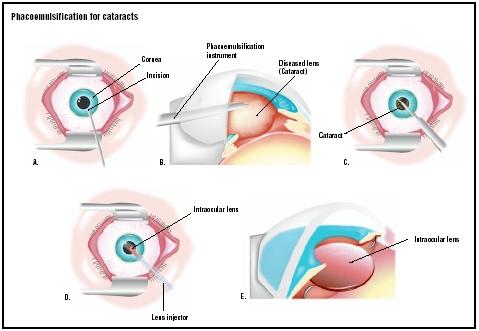

This method is favored for its minimally invasive approach, rapid recovery time, and reduced risk of complications. Most patients notice an enhancement in their vision within 24 to 48 hours and can return to their regular activities within a week.
Extracapsular Cataract Extraction (ECCE)
Extracapsular cataract extraction (ECCE) is employed when the cataract is too thick to be fragmented with ultrasound, such as in advanced cases. The surgeon excises the cloudy lens in one single piece through a larger incision while preserving the posterior part of the lens capsule to support the IOL.


Although effective, this technique necessitates a longer recovery period compared to phacoemulsification and carries a slightly elevated risk of complications such as infection and inflammation. Patients might require more extended follow-up care and post-operative medications.
Small Incision Cataract Surgery (SICS)
SICS is a manual, suture-free method for cataract removal that involves making a slightly larger cut than in phacoemulsification, typically around 5. 5 to 6. 5 mm. The cloudy lens is extracted in one piece through this incision without using ultrasound, and an intraocular lens (IOL) is inserted to restore vision.


This approach is especially beneficial in environments where advanced phacoemulsification technology is unavailable or in cases of developed cataracts. While the recovery period might be slightly longer than that of phaco, SICS remains a dependable, cost-effective, and safe option with favorable visual results.
Intracapsular Cataract Extraction (ICCE)
Intracapsular cataract extraction (ICCE) is a technique that is not as frequently used and is more invasive. It entails the removal of both the lens and its enclosing capsule simultaneously through a larger incision. This method was commonly utilized prior to the advancement of phacoemulsification and is now advised only in exceptional scenarios where there is severe damage to the lens capsule.
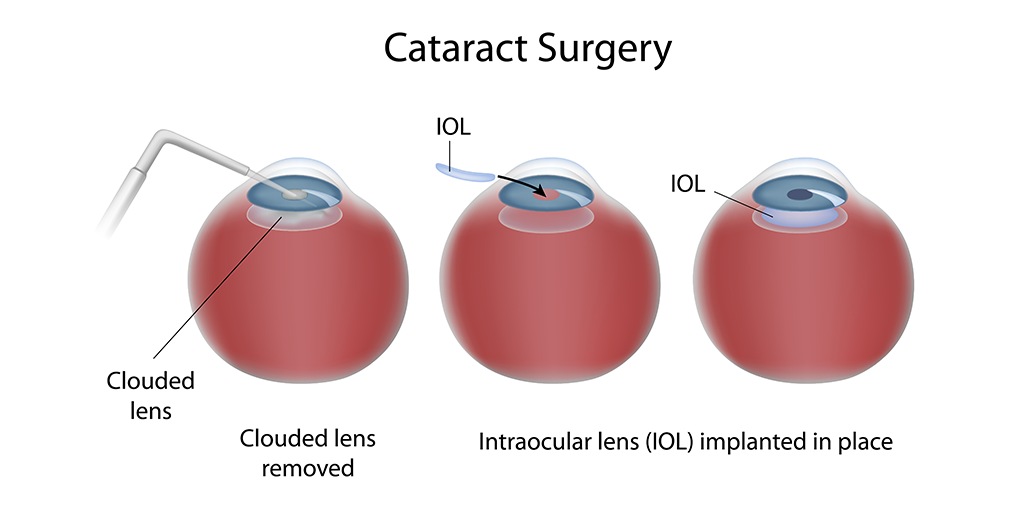

Due to the necessity of a large incision in ICCE, the time needed for recovery is notably prolonged, and the likelihood of complications is increased. Patients who receive ICCE often require specialized intraocular lenses (IOLs) that are placed in a different location in the eye than with other surgical methods.
Femtosecond Laser-Assisted Cataract Surgery (FLACS)
Femtosecond laser-assisted cataract surgery (FLACS) represents a contemporary method that improves the accuracy and safety of cataract extraction. This approach employs a femtosecond laser to make precise cuts and to soften the cataract prior to its removal. By minimizing manual techniques, this procedure promotes a more reliable outcome.
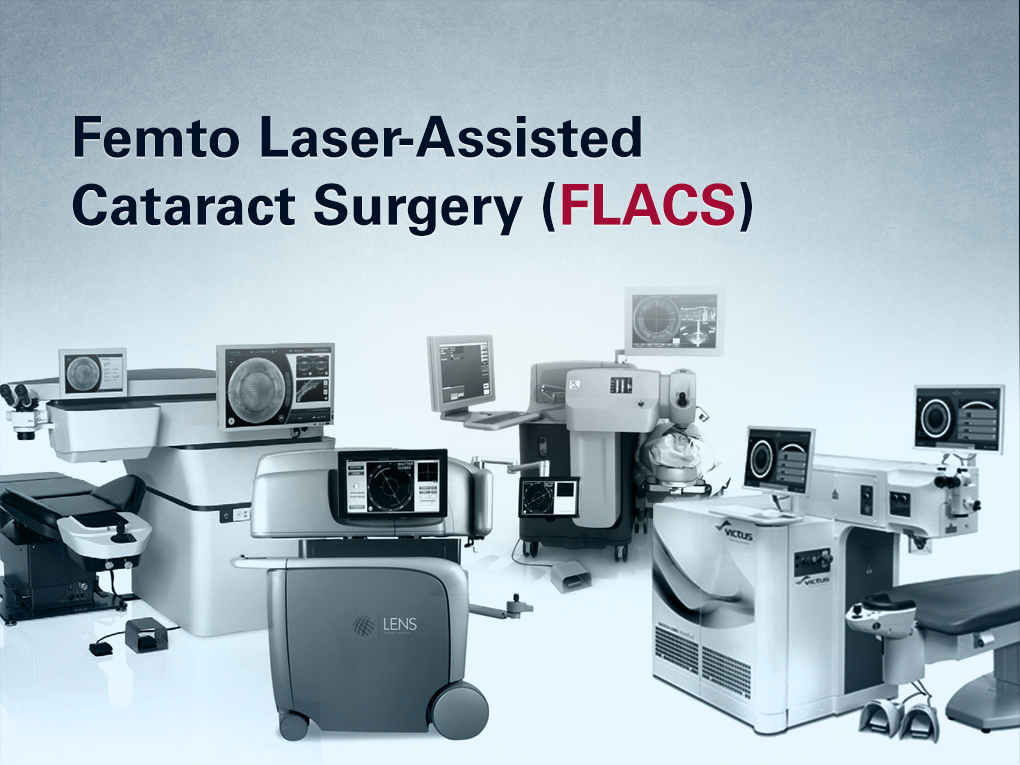

FLACS is especially advantageous for patients with complicated cataracts or for those interested in high-quality lens options. However, it is usually pricier than conventional cataract surgery and may not be included in all insurance plans.
If any patient of ENT requires any surgery, opd consultation or online consultation in clinic of ENT specialist Doctor Dr Sagar Rajkuwar ,he may contact him at the following address-
Prabha ENT clinic, plot no 345,Saigram colony, opposite Indoline furniture Ambad link road, Ambad ,1 km from Pathardi phata Nashik ,422010, Maharashtra, India-Dr Sagar Rajkuwar (MS-ENT), Cell no- 7387590194 , 9892596635
Issued in public interest by –
Comparing Different Cataract Surgery Techniques
Various cataract surgery techniques present distinct benefits. Recognizing their differences is crucial for choosing the appropriate option.
What Are the Three Main Types of Cataract Surgery?
The three main categories of cataract surgery include:
- Phacoemulsification – The most prevalent and least invasive method.
- ECCE/SICS – Applied for advanced cataracts that cannot be disintegrated using ultrasound.
- FLACS – A laser-assisted option aimed at achieving greater precision.
Each technique has specific indications, advantages, and recovery periods. It is vital to have a comprehensive consultation with an eye specialist to ascertain the best option for individual needs.
For update on further important health related topics and frequently asked questions on health topics by general population please click on the link given below to join our WhatsApp group –
https://chat.whatsapp.com/Lv3NbcguOBS5ow6X9DpMMA
Issued in public interest by –
Types of Laser Eye Surgery for Cataract
Laser-assisted cataract surgery, especially FLACS, is becoming more popular due to its accuracy and effectiveness. This method minimizes the necessity for manual incisions and enhances surgical results in certain cases. Patients preferring a technique without blades usually choose FLACS, though it typically comes at a higher cost compared to traditional methods.
Understanding the Cost of Cataract Surgery
The expenses associated with cataract surgery fluctuate based on the kind of procedure, hospital services, and location.
Cost Breakdown of Different Types of Cataract Surgery
- Phacoemulsification: Usually the most budget-friendly option.
- ECCE/ICCE: Infrequently done but lower in cost since it doesn’t require sophisticated tools.
- FLACS: The priciest choice because it employs laser technology.
Factors Affecting Cataract Surgery Cost
- Type of surgery being performed
- Selection of IOL (standard or premium lenses)
- Fees for hospital services and the surgeon
- Costs related to pre-surgery and post-surgery care
Recovery After Cataract Surgery
The healing process following cataract surgery varies according to the type of procedure and the patient’s overall eye condition.
Cataract Surgery Recovery Timeline
- Most patients notice improvement in their vision within a day or two.
- Complete recovery typically occurs in four to six weeks.
- During recovery, activities like swimming and heavy lifting should be avoided.
Post-Surgery Care and Precautions
- Follow the instructions for using prescribed eye drops.
- Refrain from rubbing or putting pressure on the treated eye.
- Wear protective sunglasses to guard against bright light.
- Ensure attendance at all follow-up visits with the eye doctor.
Selecting the Most Suitable Cataract Procedure for You
Aspects to Take into Account
- Degree of cataract development
- General eye condition and existence of additional eye issues
- Financial considerations and access to modern technology
- Your choices and the advice of the surgeon
FOR INFORMATION IN GREAT DETAIL ON Cataract meaning PL CLICK ON THE LINK GIVEN BELOW-It Is Always Better To View Links From Laptop/Desktop Rather Than Mobile Phone As They May Not Be Seen From Mobile Phone. ,In Case Of Technical Difficulties You Need To Copy Paste This Link In Google Search. In Case If You Are Viewing This Blog From Mobile Phone You Need To Click On The Three Dots On The Right Upper Corner Of Your Mobile Screen And ENABLE DESKTOP VERSION.
FOR INFORMATION IN GREAT DETAIL ON Cataract Surgery PL CLICK ON THE LINK GIVEN BELOW-It Is Always Better To View Links From Laptop/Desktop Rather Than Mobile Phone As They May Not Be Seen From Mobile Phone. ,In Case Of Technical Difficulties You Need To Copy Paste This Link In Google Search. In Case If You Are Viewing This Blog From Mobile Phone You Need To Click On The Three Dots On The Right Upper Corner Of Your Mobile Screen And ENABLE DESKTOP VERSION.
FOR INFORMATION IN GREAT DETAIL ON Difference between glaucoma and cataract PL CLICK ON THE LINK GIVEN BELOW-It Is Always Better To View Links From Laptop/Desktop Rather Than Mobile Phone As They May Not Be Seen From Mobile Phone. ,In Case Of Technical Difficulties You Need To Copy Paste This Link In Google Search. In Case If You Are Viewing This Blog From Mobile Phone You Need To Click On The Three Dots On The Right Upper Corner Of Your Mobile Screen And ENABLE DESKTOP VERSION.
FOR INFORMATION IN GREAT DETAIL ON How long to wear eye shield at night after cataract surgery PL CLICK ON THE LINK GIVEN BELOW-It Is Always Better To View Links From Laptop/Desktop Rather Than Mobile Phone As They May Not Be Seen From Mobile Phone. ,In Case Of Technical Difficulties You Need To Copy Paste This Link In Google Search. In Case If You Are Viewing This Blog From Mobile Phone You Need To Click On The Three Dots On The Right Upper Corner Of Your Mobile Screen And ENABLE DESKTOP VERSION.
FOR INFORMATION IN GREAT DETAIL ON Cataract Symptoms PL CLICK ON THE LINK GIVEN BELOW-It Is Always Better To View Links From Laptop/Desktop Rather Than Mobile Phone As They May Not Be Seen From Mobile Phone. ,In Case Of Technical Difficulties You Need To Copy Paste This Link In Google Search. In Case If You Are Viewing This Blog From Mobile Phone You Need To Click On The Three Dots On The Right Upper Corner Of Your Mobile Screen And ENABLE DESKTOP VERSION.
FOR INFORMATION IN GREAT DETAIL ON Cortical cataract PL CLICK ON THE LINK GIVEN BELOW-It Is Always Better To View Links From Laptop/Desktop Rather Than Mobile Phone As They May Not Be Seen From Mobile Phone. ,In Case Of Technical Difficulties You Need To Copy Paste This Link In Google Search. In Case If You Are Viewing This Blog From Mobile Phone You Need To Click On The Three Dots On The Right Upper Corner Of Your Mobile Screen And ENABLE DESKTOP VERSION.
If Any Patient of ENT Requires Any Surgery, Opd Consultation Or Online Consultation In Clinic of ENT Specialist Doctor Dr. Sagar Rajkuwar ,He May Contact Him At The Following Address-
Prabha ENT Clinic, Plot no 345,Saigram Colony, Opposite Indoline Furniture Ambad Link Road ,Ambad ,1 km From Pathardi Phata Nashik ,422010 ,Maharashtra, India-Dr. Sagar Rajkuwar (MS-ENT), Cell No- 7387590194, 9892596635
Issued In Public Interest By –
If you are from Nashik Maharashtra and having any eye/ophthalmic problem then you may take appointment with -Birla eye hospital, B-180, Opposite Zilla Parishad,, Trimbak Road, near Pooja Internatinal Hotel, Nashik, Maharashtra 422002,
Phone no -02532505666
If you are not from Nasy but from India then you may dial -8888888888-this is no of Just dial and they may provide you the contact number and adress off eye specialist doctor near your locality .In any case it is always better to take opinion from your regular doctor whom you trust,/respect so that he can let you know details of senior and experienced eye specialist doctor/ophthalmologist
Any ophthalmologist with minimum of 10 yrs experience is considered senior
What is cataract surgery?
Cataract surgery is a surgical procedure aimed at improving your vision by removing a cataract (cloudy lens). Like a camera, your eye has a lens that focuses light. Water and proteins make up the majority of the lens. The proteins begin to deteriorate as a cataract forms, causing the lens to become cloudy and yellowish. Cataracts are primarily brought on by aging. However, cataracts can also be caused by certain medical disorders and drugs, injuries, and previous eye surgeries.
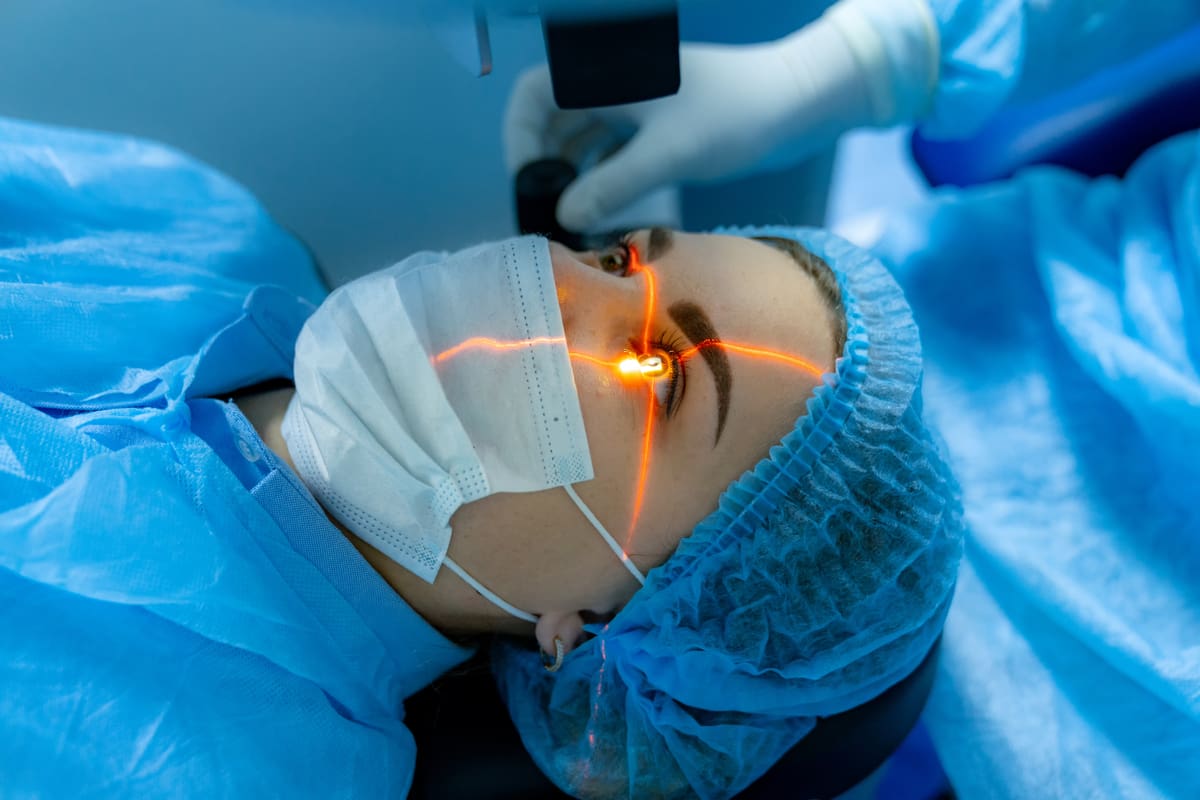
A cataract blocks light from passing through your lens properly. As a result, you may have symptoms like double vision, halos around bright lights, or blurry vision.
The cloudy lens is removed during cataract surgery, and a clear, synthetic lens is implanted in its place. The operation is performed by an ophthalmologist, who also helps you select the intraocular lens (IOL) that is most appropriate for you.
The majority of people have an IOL implanted during cataract surgery. IOLs are transparent to allow light to pass through and be properly focused by the eye. IOLs are available with different focusing strengths to correct nearsightedness and farsightedness.
Your surgeon may also offer special intraocular lenses (IOLs) to treat astigmatism and presbyopia. These treatments might help lessen your reliance on glasses or contacts following cataract surgery, even if they are probably not insured.
Currently, the only proven treatment for cataracts in adults is cataract surgery. For many people, there are very few problems with surgery, and it restores their vision. It’s an outpatient treatment that enables a quick recovery. You may only need an operation on one of your eyes. If both eyes have cataracts that require treatment, your ophthalmologist will schedule two separate procedures one or two weeks apart.
How painful is cataract surgery?
Most people feel hardly any discomfort during or after cataract surgery. To numb your eye for the length of the treatment, you will receive a topical anesthetic (eye drops). Your eye may feel gritty or slightly painful shortly after the surgery, but over-the-counter pain relievers should help with this.
Who needs cataract surgery?
If cataracts in one or both eyes are causing vision problems that interfere with your daily life, you may need surgery.
If your eye care practitioner needs to see the back of your eye in order to treat other eye disorders, they may also recommend cataract surgery, such as:
Macular degeneration related to aging.
Retinopathy linked to diabetes.
It’s important to recognize that cataract surgery does not restore vision lost due to any of these other issues. It only enhances vision impairment brought on by cataracts.
How do I decide if it’s time for cataract surgery?
Cataracts do not constitute a medical emergency. As a result, don’t feel rushed or coerced into arranging surgery if you’ve recently discovered that you have cataracts. In most cases, you can postpone the procedure until it is most convenient for you.
A new pair of glasses or contacts may be helpful when you first notice cataract symptoms. However, cataracts usually progress with time. When cataracts interfere with your ability to carry out activities you need or want to do, it may be a sign that you need surgery. Talk to your eye surgeon about the best time for surgery given your particular situation.
How prevalent is cataract surgery?
Cataract surgery is one of the most commonly performed procedures in the United States and around the world. According to researchers, there are around 20 million cataract surgeries done worldwide and over 3 million in the United States each year. About half of those who live into their 90s will need cataract surgery.
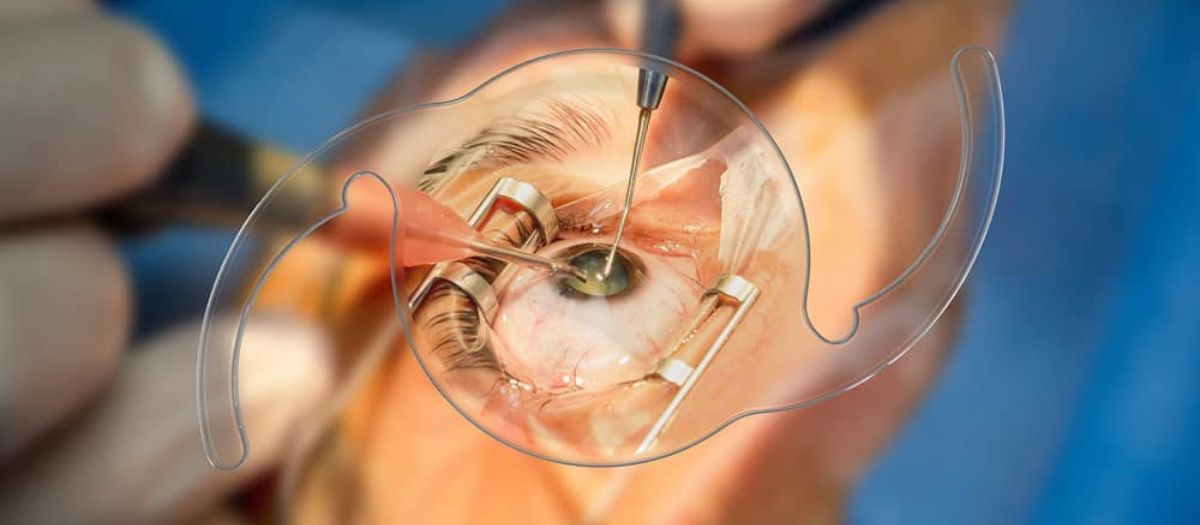
Specific Details
How should I get ready for cataract surgery?
You will meet with your ophthalmologist for a thorough eye examination before the day of your surgery. Your ophthalmologist will do the following as part of this assessment:
- Look for any signs that you shouldn’t have surgery.
- Determine any potential risk factors that could make your surgery more difficult.
- Measure your eye to find out how much focusing power your IOL needs.
- advise you on whether or not you need to use prescription eye drops.
- Evaluate your eye health.
Use this time to discuss any questions or issues with your ophthalmologist. You may wish to ask:
- What are the particular dangers of surgery for me?
- What advantages will I receive?
- Which IOL kind do you recommend for me?
- Will I need glasses or contact lenses after the operation?
- How long will it take me to recover?
- When can I expect to go back to my normal routine?
Immediately following your surgery, you won’t be able to drive. As a result, be sure to ask someone to bring you to and from your procedure.
How is cataract surgery performed?
Cataract surgery is performed as an outpatient procedure. As a result, you should be able to return home soon after the procedure is finished.
Your surgeon will do the following to perform cataract surgery:
1. Numb the outermost portion of your eye. This method is called topical anesthesia. You won’t feel anything during the surgery since you will get eye drops in your eye. You might also be prescribed medicine to help you relax. During your surgery, you will be aware, but you will not see anything coming near you. All you will see is a range of lights.
2. Make a little cut in your cornea. For this phase, your surgeon will utilize a blade or a laser. In most cases, the incision may be left open without stitches.
3. Extract and fragment the cataract. Phacoemulsification is the most commonly used method for this. Your surgeon will use ultrasound waves to shatter your lens into several tiny pieces. They will then suction out the pieces.
4. Position your new lens. Your surgeon will place your new lens through the same cut. Most intraocular lenses (IOLs) are foldable for easier insertion. Your IOL will then expand into the space where your cloudy lens was placed.
5. Protect your eye. To protect your eye, your surgeon will place a protective shield over it, similar to an eye patch.
Cataract Surgery Cost Breakdown
In order to plan their course of therapy more effectively, patients must understand the financial aspects of cataract surgery. There are a number of variables that influence the overall cost, and the price fluctuates greatly.


Average surgery expenses
In India, a single eye cataract operation costs between INR 15,000 and INR 100,000. The cost varies depending on the kind of operation, your doctor’s experience, and the location of the surgery.
The cloudy lens is removed via a small incision using ultrasonic energy during the normal phacoemulsification cataract procedure. The price of this operation ranges from INR 22,000 to INR 60,000. Laser-assisted surgery, which costs between INR 80,000 and INR 1,20,000 per eye, does not need any incisions.
The price is significantly influenced by the location. Because they have greater operational expenses, big cities are more expensive than smaller towns. Since the sort of synthetic lens you select might affect the ultimate cost, it’s important to choose carefully.
INR 15,000 to 40,000 per eye for conventional monofocal lenses
High-end lenses (multifocal or toric): between INR 50,000 and 1,50,000 each eye
Insurance coverage options
After waiting for 1–2 years, the majority of Indian health insurance policies will pay for cataract surgery. To manage your costs effectively, you should be fully aware of the extent of your insurance coverage.
Simple things like hospital expenses, doctor appointments before and after surgery, and basic lens implants are often covered by insurance. However, there are restrictions. Several regulations limit the amount you may seek for cataract surgery, either as a set sum per eye or as a portion of your overall coverage.
Depending on your insurance, you may be responsible for between 10% and 20% of the entire cost. You must choose hospitals that collaborate with your insurance carrier and get permission before any procedure if you want cashless therapy.
Additional costs to consider
The cost of cataract care includes more than just the procedure. Prior to surgery, you will need eye exams and scans, such as biometry and corneal tomography.
Following surgery, you could need follow-up appointments, medications, and further procedures that are not covered by standard insurance. You will likely pay more if you select specialized lenses since insurance typically only covers the fundamentals.
The cost of a hospital room varies according to its type. The amount of room coverage provided by insurance plans is frequently restricted. If you select a more expensive room, you pay the additional cost.
Extra costs include:
- Diagnostic imaging techniques
- Services for anesthesia
- Medication given after surgery
- Eye protection
- transportation options
For Part B services, US Medicare patients pay an annual deductible of INR 19,069.98. After that, Medicare covers 80% of the authorized sum. The remaining 20%, along with any additional expenses for specialized lenses or sophisticated surgery, are the responsibility of the patients.
A lot of surgery facilities provide payment options. They collaborate with other firms to provide unique medical loans and interest-free payment options. In some areas, all services, including pre-operative testing, the procedure itself, and post-operative treatment, are packaged together for a set cost.





